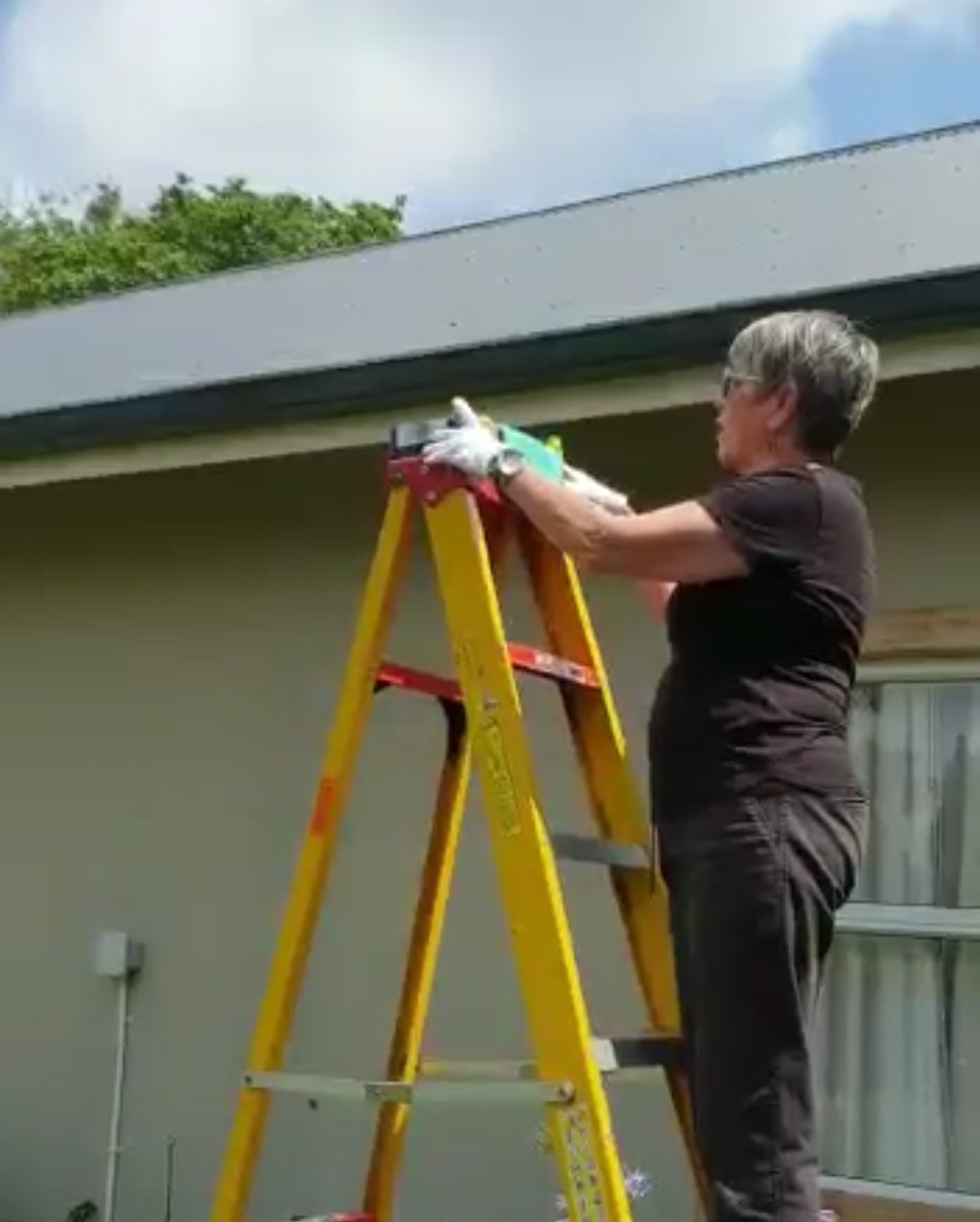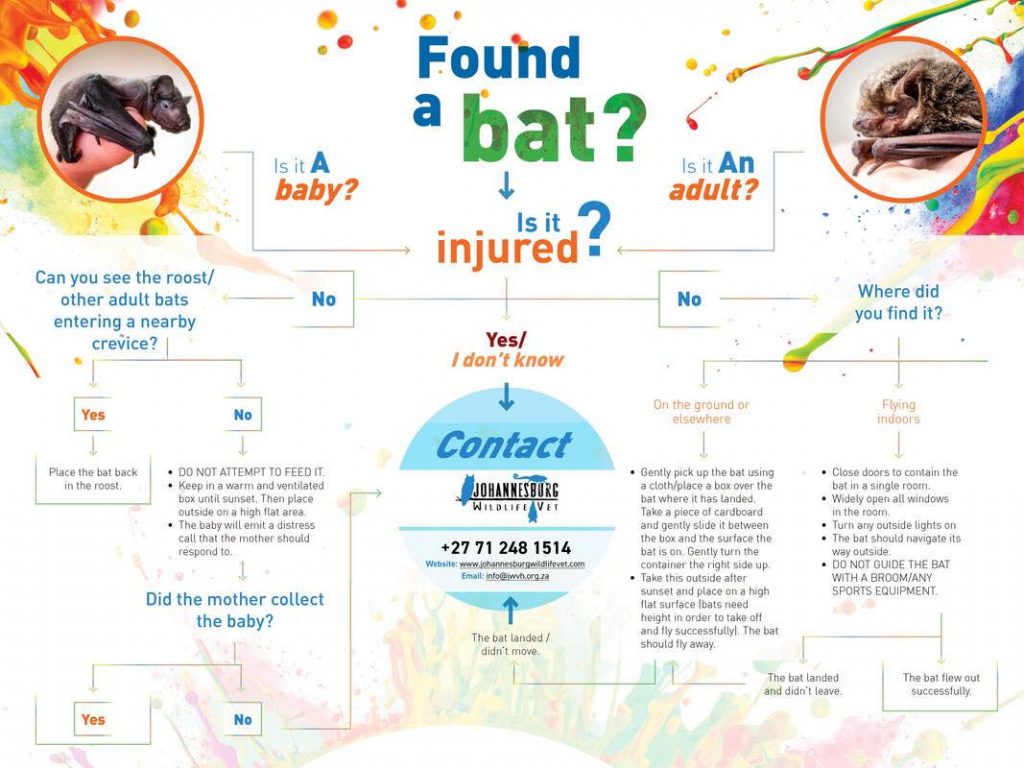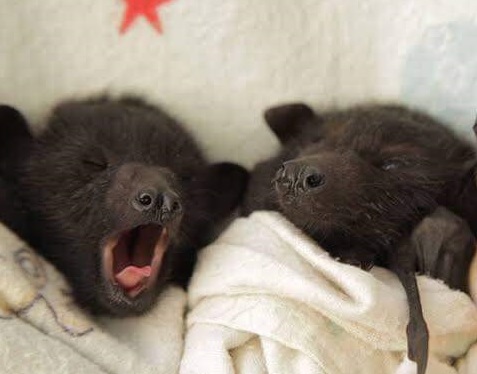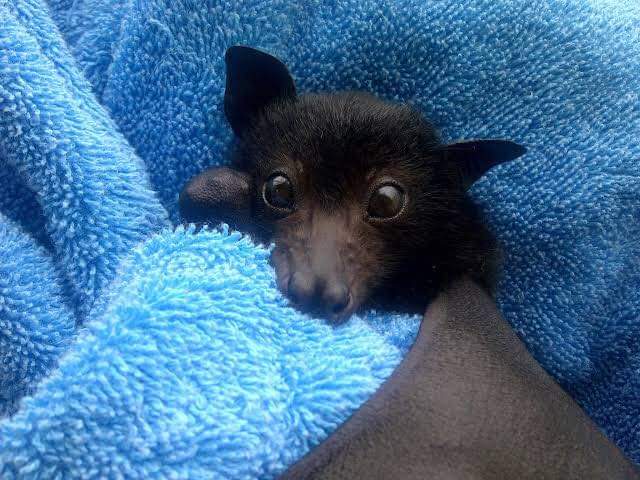
ANIMALS 101 – AN IMPORTANT READ SINCE WE ARE IN BAT BREEDING SEASON.
Many people come across young, injured or grounded bats and wonder what to do with them. Care and caution should be exercised and such cases should be referred to the nearest bat interest group, rehabilitation centre or the SPCA.
Urban development causes fewer suitable roost sites for bats, such as caves, dead trees and natural cavities, thus forcing bats to seek alternative roosting sites making roofs and ceilings the next optimal site for many bat species. They are quiet animals, so you won’t even know they are there.
A bat found indoors is most likely to be a crevice-dwelling species. These bats are often lost youngster or babies that cannot fly since we are in bat breeding season which runs from October up until late February.
SOME BAT FACTS
- Bats are clean animals and South African bats are odourless and appear to not carry rabies as we know it.
- Bats are the only true flying mammal, with over 1,400 species in the world and more are still being discovered.
- Bats usually only have one baby a year and can live for up to 30 years.
- Bats play a crucial role in our ecosystem.
- Some plants depend partly or wholly on bats to pollinate their flowers or spread their seeds.
- Insectivorous bats provide natural pest control. A tiny pipistrelle can eat up to 3,000 insects in a night.
- Other species play a vital role in pollinating agricultural crops and indigenous vegetation, being of great value to the agricultural sector – thanks to bats we get bay adapted plants – which include dates, vanilla, bananas, breadfruit, guavas, Iroko timber, balsa wood, sisal, Tequila and chewing gum!
- Some bats are ‘indicator species’, because changes to these bat populations can indicate changes in aspects of biodiversity. Bats might suffer when there are problems with insect populations.
- You can’t relocate bats, you might be able to exclude (“lock out”) them from the house, but it isn’t advised as you can never be certain that all the babies are out too! Thus, trapping them inside and their parents out which leads to starvation.
Also read: ANIMALS 101 – DON’T LET YOUR PET OUTSMART YOU BY GETTING OUT.
WHEN YOU FIND A BABY BAT (PUP)
The young babies do not have fur yet and have a “rubber” appearance. They are called pinky’s. For the first few weeks, the pups can’t fly yet and still drink from their mom.
- Collect them in a soft cloth and try not to touch them with your hands.
- Secure them in a box or ice-cream tub (with air holes) which can seal properly as they are escape artists.
- Any bat found, should be kept warm because they might be in shock. Pups can’t regulate their body temperature yet (no fur) and therefore won’t necessarily move away from the heat and can burn themselves. Warm tap water in a bottle, covered with a towel/cloth is best.
- Call a rehabilitator as you might not be equipped to feed them, release them or see whether they are injured. Rehabilitators will ask for photos and videos.
We do not recommend placing bat pups back into roosts (controversy):
- The mother bat may be dead.
- Several species of bat may roost in the same roof, placing the pup in the wrong roost can get it killed.
- The mother bat may have twins or triplets and has chosen to abandon one as resources may not enable her to raise all the babies.
REUNITE WITH MOM
Mom is what is best for them, so reuniting them, with the guidance of a rehabilitator, is ideal! Do this as close as possible to where you found them. Some use ladders with the open container (secured to the ladder) on top, with a cloth and warm water bottle in the bottom and then the pup under another cloth, without the lid. Mom needs to be able to land on a firm surface that is rough enough like a towel thrown over a wall, balcony railing or ladder.
You can try it for one or maybe two consecutive nights and for an hour or two at dusk, depending on the weather. If it didn’t happen the first night, chances are low for the second night. The pup needs to be warm or it won’t call for its mom.
Please watch the pup collection site, so that predators (like cats or owls) don’t come and collect the pup.
Bats can’t take off from the ground, they need to “drop” from a height (around 1.5m). As they’re falling, they get the wind under their wings to fly.

A BAT IN YOUR HOME (NSPCA)
- Close any doors you can to contain the bat in a single room or space.
- Open all the doors and windows as wide as you can in that area.
- Turn any outside lights on.
- Turn off the lights in the room.
- Stay in the room, sit down, relax, and watch the bat. If you don’t, you will not know if it actually left or has landed and is resting somewhere.
- Do not try to guide the bat with a broom, tennis racket etc. It does not want to get in your hair!
- The bat, if allowed to, will navigate its way out using the light outside and the draft created by the open window or door.
- This may take 20 minutes.
GROUNDED BATS
Adult bats should also be handled with care (no bare hands) and kept warm. If the bat has landed somewhere and is in good health, it may be captured and released outside after sunset as close as possible to where they were found. Approach your visitor very slowly and quietly. Gently place a can or box over the bat, slide cardboard underneath and release your visitor outside at dusk, placing it on a high surface where it will be able to take off.
If bitten by your cat or dog there is a danger of infection and death, even if they flew off. You can add a bell to your cat’s collar or keep them inside around sunset hours to prevent this. Call a rehabilitator or wildlife vet to treat the injured bat.
DON’T FEED THEM (without a rehabilitator’s guidance)
It is our natural instinct to want to feed them and with good intent, however in general, we don’t advise giving food or water until you spoke to a rehabilitator.
Although small, bats have a large body surface due to their wingspan and can easily dehydrate. When they are dehydrated, they can’t digest food properly. They have tiny mouths and can easily choke or aspirate, especially when in shock. If you are inexperienced with liquid therapy and feeding, you can potentially kill them.
Depending on the size, the rehabilitator will guide you on what kind of food. This can range from kitty milk(for tiny pups) with a syringe, mealworms, bananas etc. If you have to give water to a bat who can drink themselves already, a shallow jam jar lid can work.

REMEMBER
- Never disturb a roost.
- It’s illegal to harm them.
- Don’t poison or kill them – they might be the last of their specie!
- Never wake bats found during hibernations as waking requires a huge amount of energy which may be more than the bat can afford to survive.
- Don’t fear them.
Call these bat-specific rehabilitators:
Vicky 073 174 9775 / SAWRC 073 112 1131
Sharron from BatMadGP 082 553 5258
Please help us change the way people see bats and try to live with them as they are sentient beings and important to the ecosystem.
Next week we will look at kids and their interaction with pets.
WHEN YOU KNOW BETTER, DO BETTER!


